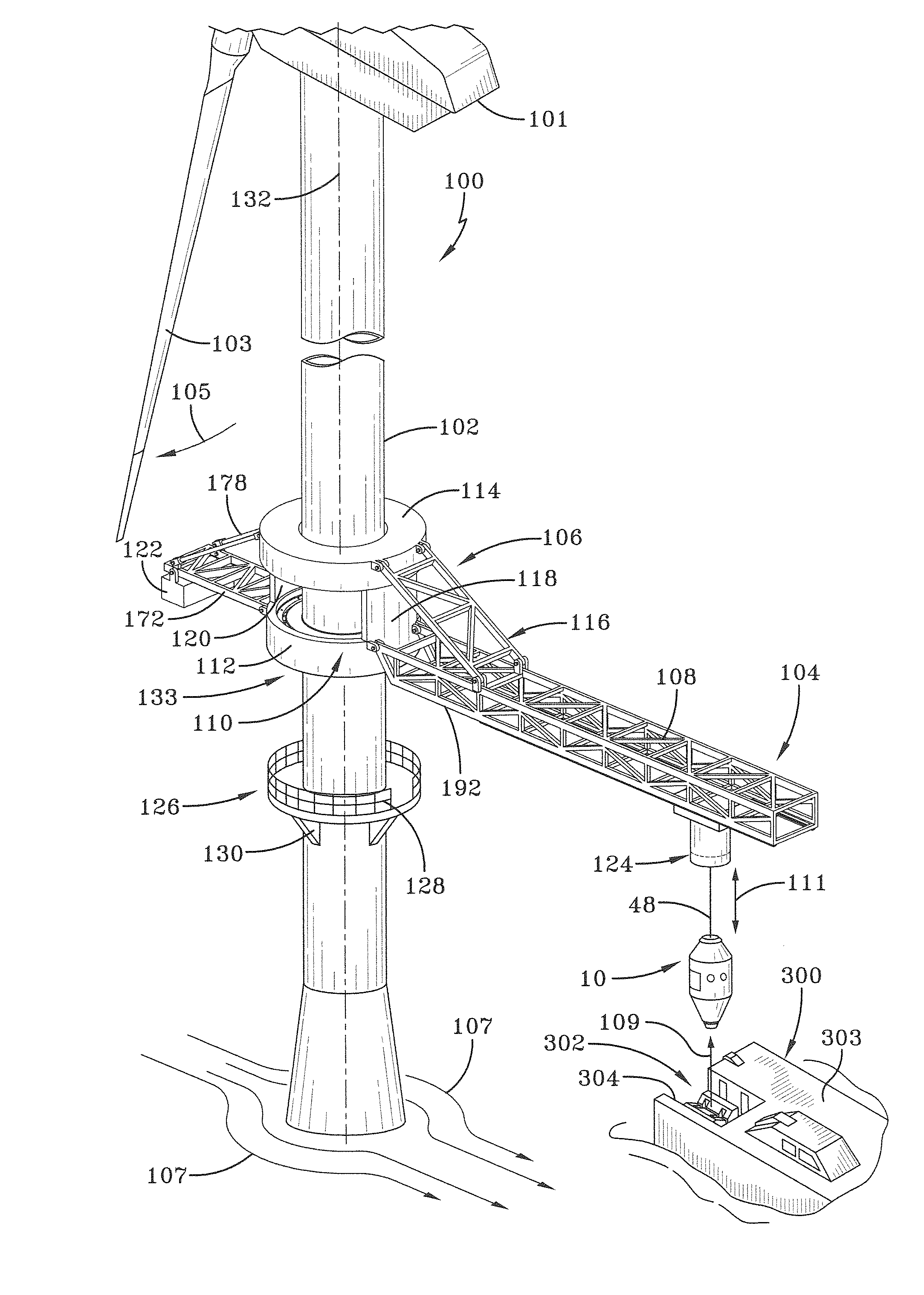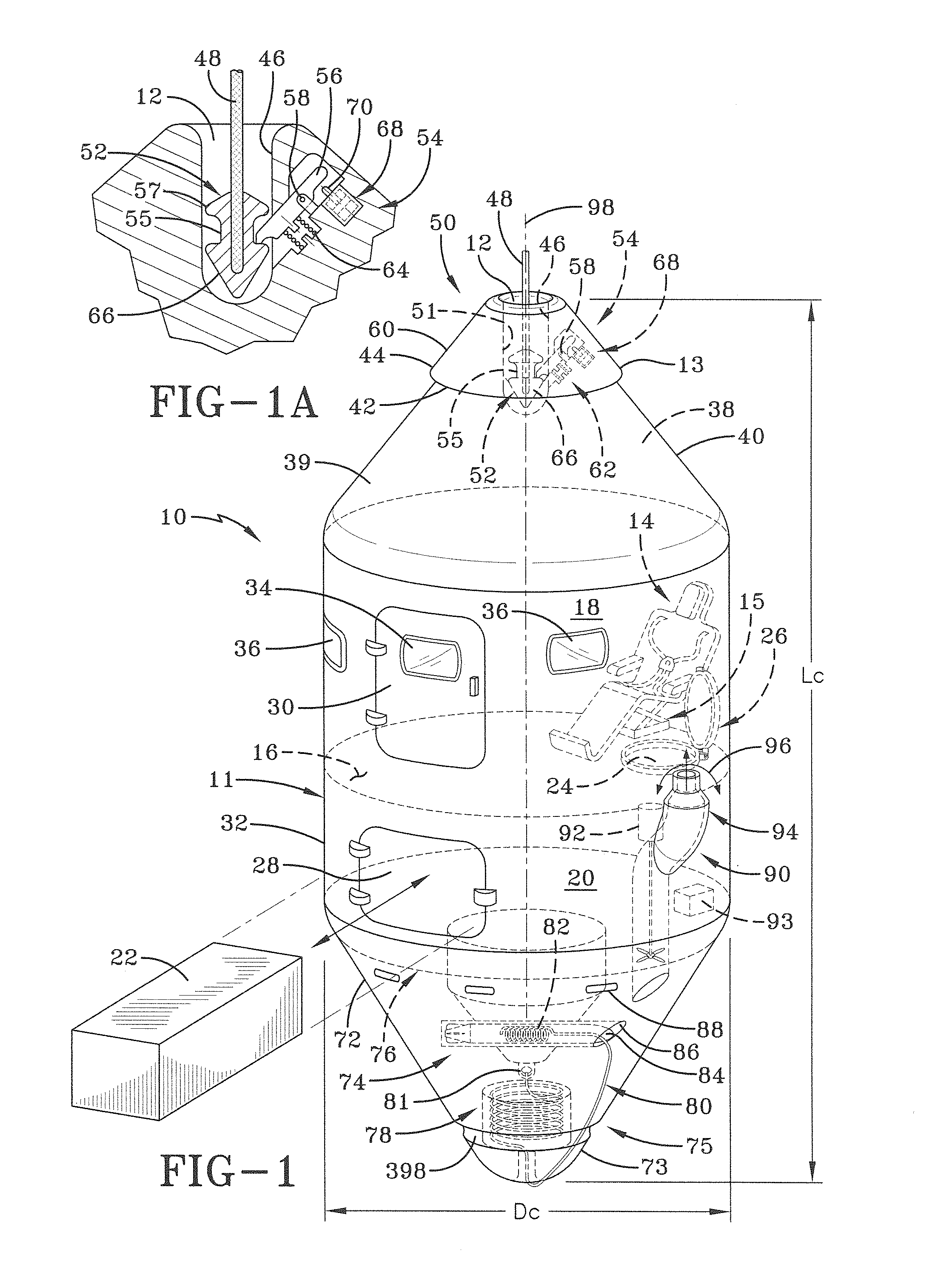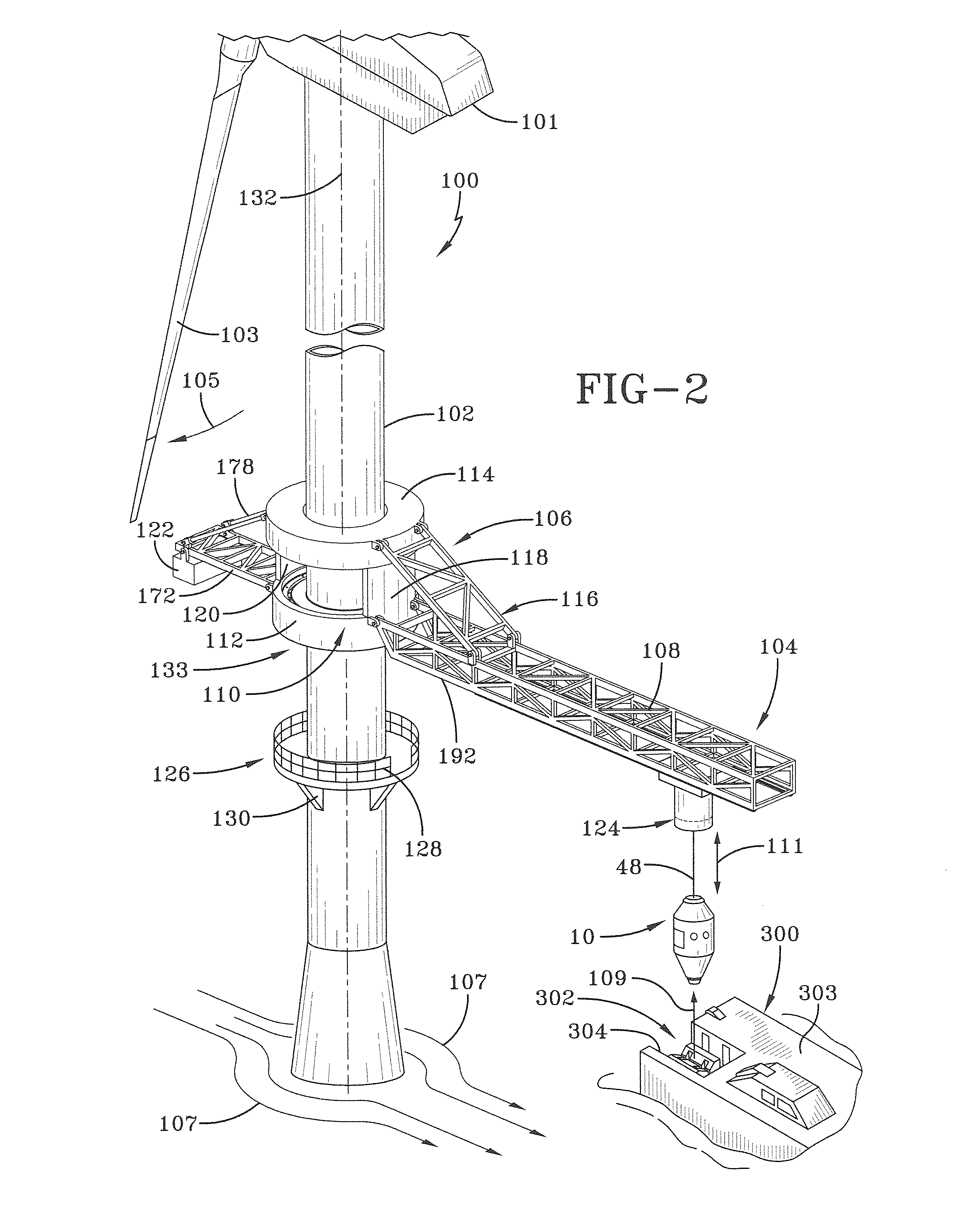Weather maintenance system for an offshore wind turbine maintenance program
a maintenance program and weather maintenance technology, applied in the field of maintenance of wind turbines, can solve the problems of increasing the cost of offshore wind farms, increasing the cost of maintenance, and increasing the total tim
- Summary
- Abstract
- Description
- Claims
- Application Information
AI Technical Summary
Benefits of technology
Problems solved by technology
Method used
Image
Examples
Embodiment Construction
[0075]The present invention in its preferred form includes as its basic components a maintenance capsule which would carry a group of repair personnel and their equipment for maintaining an offshore wind turbine on a wind turbine tower and for returning repair personnel and equipment to a maintenance vessel such as a ship or boat. The equipment comprises tools and replacement parts. The maintenance capsule is conveyed from and to a wind turbine tower apparatus by means of such a maintenance vessel. The maintenance vessel would carry a number of maintenance capsules configured as required and they would each be transferred to a wind turbine tower apparatus by means of an appropriate crane apparatus or assembly which is also part of the invention, which is located at the wind turbine tower apparatus. The maintenance capsule must be as strong or stronger than shipboard escape vehicles or pods of the type that are dropped from the stern of a ship from considerable heights into the sea (...
PUM
 Login to View More
Login to View More Abstract
Description
Claims
Application Information
 Login to View More
Login to View More - R&D
- Intellectual Property
- Life Sciences
- Materials
- Tech Scout
- Unparalleled Data Quality
- Higher Quality Content
- 60% Fewer Hallucinations
Browse by: Latest US Patents, China's latest patents, Technical Efficacy Thesaurus, Application Domain, Technology Topic, Popular Technical Reports.
© 2025 PatSnap. All rights reserved.Legal|Privacy policy|Modern Slavery Act Transparency Statement|Sitemap|About US| Contact US: help@patsnap.com



